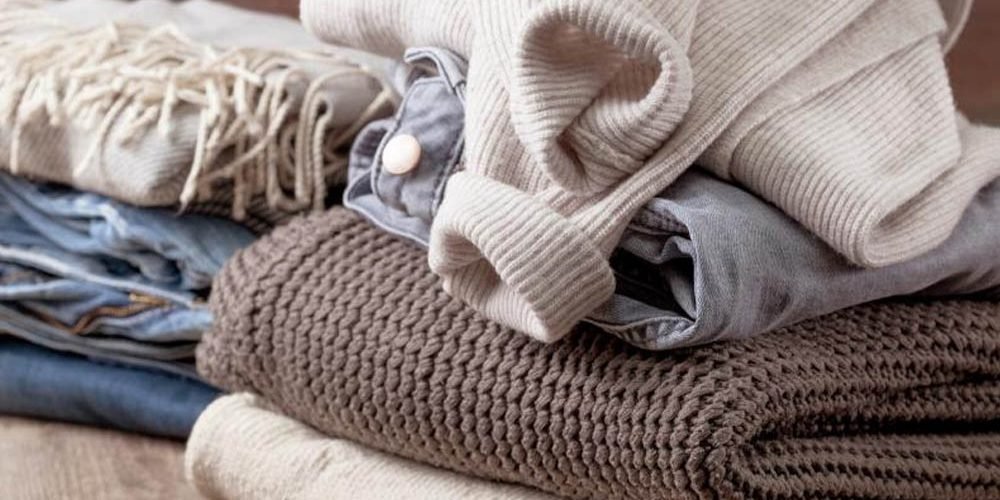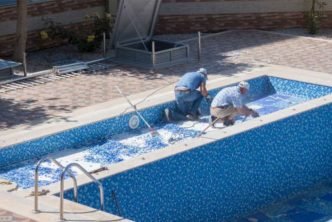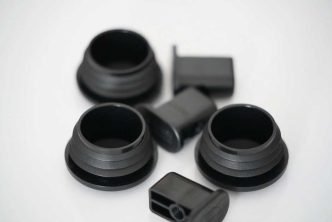The textile/fashion business is the world’s most environmentally damaging industry. If you’re concerned about sustainable fashion, you should think about how important it is to wear fabrics created and sourced sustainably. Even if a fashion firm manufactures its products locally, reduces fabric waste, and compensates its employees decently, their fabric selections may prevent them from being genuinely sustainable.
Environmental issues in the textile industry arise throughout some manufacturing processes and are followed through to the completed product. That’s why we’re talking about sustainable materials: so that we, as consumers, can make better decisions about fabrics and contribute to achieving our Sustainable Development Goals.
Table of Contents
How can you define Sustainable Fabric?
First, we must inquire as to whence the material originates. Is it due to the exploitation of raw materials, the deterioration of farming and agricultural techniques, or the death of an animal? Or were the materials grown or repurposed sustainably?
Second, we must determine if the raw materials require any processing before being used to create fabrics. Weaving, knitting, and utilizing non-toxic colors are all instances of sustainable fabric processing. On the other hand, many fabrics necessitate bleaching, coloring with hazardous dyes, and chemical processing. Using formaldehyde to keep materials from wrinkling is a good example. The last factor in evaluating is the fabric’s end-of-life prospects: where will it end up, and will it have a detrimental influence on people or the environment? This is significant since many unsustainable materials are in landfills, and textiles account for 7.7% of municipal waste.
Eco-friendly fabrics
Hemp, wool, organic cotton, soy silk, bamboo textiles, jute, corn fiber, and other natural materials are deemed eco-friendly due to their lack of chemical or hazardous effects. Furthermore, when compared to other synthetic fibers, they are less expensive. Due to the easy availability of low-cost labor and few environmental requirements, textile chemical manufacturing is shifting to developing countries. This is also due to the diverse production processes used by developed countries and public knowledge of the health risks associated with these operations. However, while such tactics may benefit the employer, they are inherently dangerous to society, necessitating strict oversight.
Ways to distinguish Sustainable Fabrics from unsustainable ones
Firms in the fashion industry are currently using greenwashing to persuade consumers that their clothing is sustainable. We go over some of the things to look for on clothing brands when trying to shop responsibly in our Sustainable Fashion: Standards and Certifications.
Cradle to Cradle
The Cradle to Cradle® certification is an eco-label that indicates that an attempt was made to design an environmentally conscious product. Based on efforts in eco-materials, social responsibility, water efficiency, renewable energy, and recycling, fabrics or clothing items can be certified at the Basic, Silver, Gold, or Platinum level.
GOTS Certified
Leading standard organizations produced the Global Organic Textile Standard (GOTS) to unify current standards in terms of sustainable textile processing. This standard examines all aspects of fabric production, including raw material collection, manufacture, and ethical labeling.
Oeko-Tex
The International Oeko-Tex Association conducts dangerous material tests on textiles and awards certificates to fabrics that do not utilize toxic chemicals in their manufacturing processes. When a textile item bears the Oeko-Tex STANDARD 100 designation, the consumer can be assured that every component is safe for human health.
Fairtrade Certified
The Fairtrade Mark, which appears on goods labels to demonstrate who created your clothes and met Fairtrade standards, is almost definitely familiar to you. Most Fairtrade criteria aim to ensure that workers and producers have fair trading terms, reasonable prices, and longer lead times.
These factors contribute to worker security, self-sufficiency, and more environmentally friendly practices. In terms of materials, Fairtrade cotton will be identified by the Fairtrade Mark or the Fairtrade Sourcing Partnership logo.
Best Sustainable and Eco-friendly fabrics
There are many sustainable and environmentally friendly materials available, but these are the most popular. Let’s look at them:
- Organic Cotton: Cotton is a natural fiber and one of the most widely used fabrics, yet it has a long history of causing issues. It consumes a lot of water and chemicals, which might hurt the environment.
Organic cotton is grown without any pesticides or chemicals, making it far more eco-friendly than conventional cotton. If your cotton is GOTS-certified, you could double that it is organic. Recycling cotton is a much more environmentally-friendly choice if you want to take it a step better.
- Organic Linen: Organic linen has many of the same advantages as hemp: grown for hundreds of years, takes no upkeep, and is biodegradable when left untreated. It’s also soft, light, robust, and naturally resistant to moths.
Because every component of the plant may be used to make linen cloth, there is very little waste. Even though the fabric’s manufacturing process is very mechanically intensive and produces some pollutants, it is still one of the most environmentally-friendly solutions available.
- Lyocell: Lyocell is a light fabric manufactured from wood pulp that is very absorbent, antibacterial, odor-free, and moisture-resistant. Lyocell is recyclable since it is made from wood pulp, making it a sustainable fabric. Tencel is the most common lyocell brand.
Although the wood pulp must be chemically degraded to produce cellulose fibres, the water and chemicals used are recyclable. This drastically reduces the number of new chemicals and water used in the manufacturing process.
- Organic Hemp: Hemp is a versatile plant that may be used to manufacture a wide range of products, including food, building materials, cosmetics, and clothing. It’s one of the oldest clothing fibers for hundreds of years because of its all-season adaptability and propensity to soften as it’s washed.
Furthermore, hemp is a low-maintenance plant. It requires little water, uses no pesticides, and is naturally eco-friendly. It even replenishes the soil with nutrients! Hemp is a sustainable fabric if it is cultivated organically without the use of chemicals to accelerate the process.
- Qmonos: Qmonos is a spider silk substitute made from spider genes and microorganisms. Because the fabric is synthetic, no spiders are used in the manufacturing process, making it vegan-friendly and non-harmful to any animals.
Amazingly, the fiber is five times stronger than steel, making it long-lasting. Despite this, the cloth is light and flexible. Although Qmonos is an excellent sustainable fabric because it is fully biodegradable, it is also quite expensive and difficult to find.
- Pinatex: Pinatex is a natural food by-product manufactured from pineapple leaf fibre. This is especially noteworthy because pineapple leaves are typically discarded, but they now have a new function.
Ananas Anam began producing Pinatex in 2017, and the company collaborates with farmers in the Philippines to generate the material. One disadvantage is that growing pineapples consumes a considerable amount of resources; that’s why Pinatex is best produced as a food by-product.
- Econyl: Econyl is a synthetic waste fiber created from industry plastic and ocean fishing nets. Econyl is a type of recycled nylon since the result is quite similar to nylon. Compared to nylon production, the recycling process produces substantially less waste and consumes significantly fewer resources.
It’s worth noting that washing Econyl will release microplastics, which could end up in the ocean. So, instead of using a washing bag to keep microplastics from escaping, stick to things that do not have to be washed frequently, like trainers.
- Recycled Fabrics: Using recycled fabrics eliminates the need for new materials or resources and fabric waste. Traditional polyester is one of the greatest polluters. Thus recycled polyester is an intriguing ecological fabric. Because it is frequently created from plastic bottles, it decreases the quantity of plastic waste sent to landfills while also avoiding the lengthy process that standard polyester goes through. It’s worth mentioning that when recycled polyester is washed, it still produces microplastics.
- Bamboo: Bamboo is a sustainable plant when appropriately cultivated, but the method it’s made into cloth isn’t always so good for the environment. Bamboo is frequently subjected to a lengthy chemical process to produce fabric, and the result is quite similar to non-sustainable rayon. However, it is still a more environmentally friendly option than standard cotton and polyester, so if you’re researching the brand, you may be able to find a relatively eco-friendly fabric.
- Deadstock Fabric: Brands that claim to be sustainable employ deadstock cloth. Deadstock fabric is just old fabric that hasn’t been sold — it could be slightly damaged, the previous owners may have over-ordered, but could also be sold as fabric scraps.
Vintage deadstock is sustainable since these materials already exist, and because they were manufactured so long ago, there are no new harmful production procedures involved in their creation. Deadstock, on the other hand, is not always sustainable. This is because certain firms purposefully over-produce cloth in the hopes of selling it at a reduced price.
Conclusion
Whether you’re a clothing designer or just a fashion enthusiast, the fabrics you choose can make a world of difference in being environmentally conscious. One of the most important things to consider when buying sustainable apparel is doing your homework. We hope that this article will save you time while inspiring you to look for eco-friendly fabrics and businesses.





